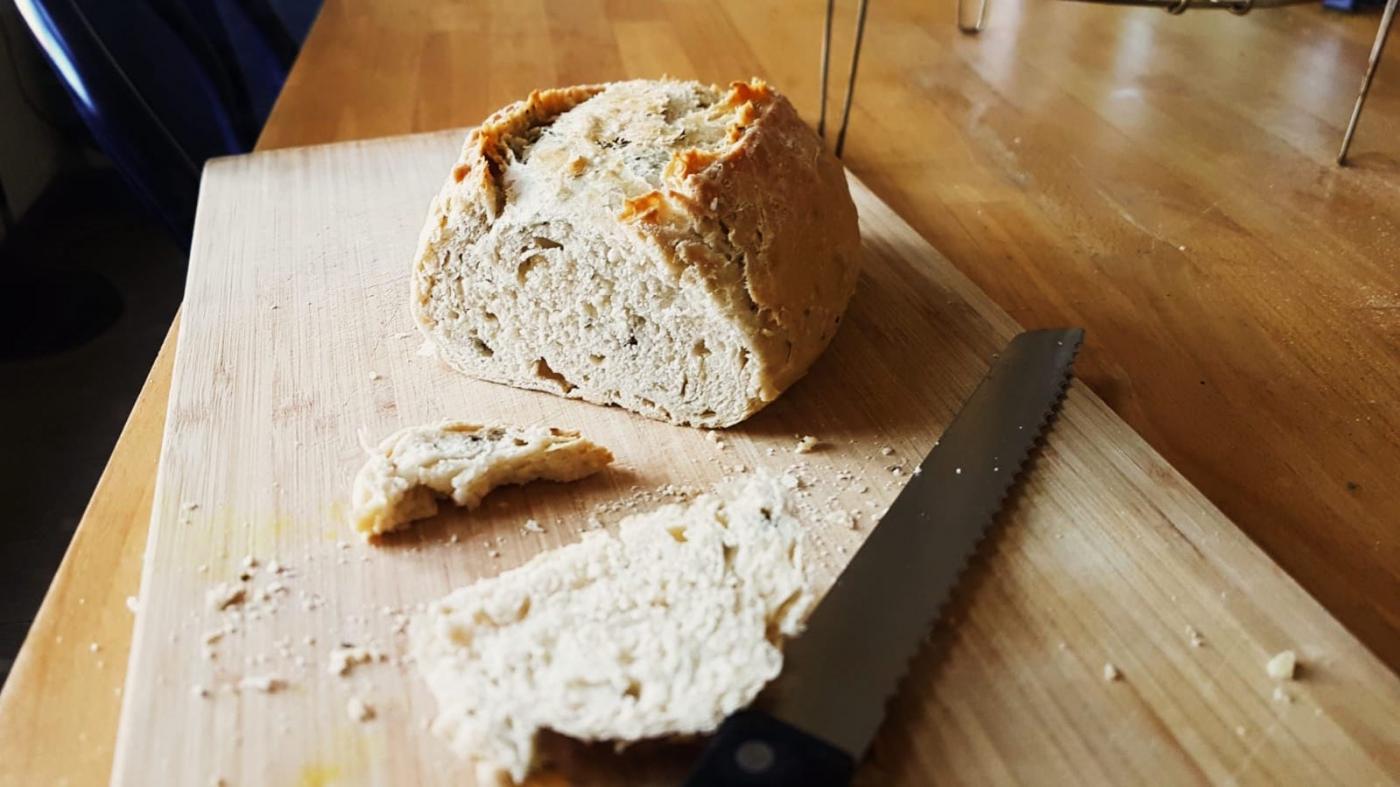Recipe Week: A Cure for Midterms

Nothing gets you out of a panic spiral like the smell of fresh-baked bread. That isn’t a recommendation, or an opinion--it’s cold, hard, fact. Or, rather, warm, tender, herby fact. It’s midterms week at the university college, I have a thesis deadline in two days, it’s been raining non-stop, and I’m going to teach you how to make bread.
Math majors, delight: bread is all about ratios. For the rest of us, don’t panic, because if I can do this, you absolutely can. Dump 3 cups of flour into a bowl--I use a saucepan, because come on, let’s be realistic, how many students have mixing bowls big enough for 3 cups of flour? 3 cups is 384 grams, which, in case your kitchenware inventory is really lacking, is 16 tablespoons. Add a little salt. Exact measurements are for people that don’t have 5 essays due this week, so just eyeball it. Grab a cup and a half of lukewarm water. Pour 7 grams of yeast--2 teaspoons, my low-tech friends--into your water and stir it up, breaking up the lumps and then leaving to sit for 5 minutes. Don’t do anything for those 5 minutes; watch the water foam up and get bubbly, if you’d like, or close your eyes and breathe. Open a window and listen to the rain, and remind yourself that you’re definitely not just procrastinating on midterms: you’re learning a skill.
When the water’s foamy, make a well in your flour-and-salt bowl and pour it in. Experts will tell you to stir it with a spatula, but experts are cowards. Get your hands in there and work the water into the flour until it starts to form a shaggy ball. There will be parts that are more incorporated than others, but be patient with it and it’ll start coming together. Wash the dough off your hands and hum something under your breath. Sprinkle some warm water on a fresh kitchen towel, just so it’s damp, and then drape it over your bowl. Carry it over to a warm place, ensure that your housemates know not to touch it, and then comes the most difficult step of all:
Leave it alone for 6 hours. Your bread isn’t going to grow if you keep poking at it. It needs time to rest, recover from the stress of a long day, and take some alone time. It deserves a quiet moment (or several) before you force it to do something spectacular and impressive. Is the metaphor overt yet?
Watch a TV show. Do a page of a coloring book. Go on a walk, or a run, or a bike ride. Call your mom. I promise she wants to hear from you. Here’s the important part: if you’re stressed out while the bread is rising, it’ll hear you, and it won’t rise as well. So, for the sake of your bread, breathe.
Once your dough ball is doubled in size and bubbly, dump it out onto a floured surface. Fold in two tablespoons of fresh chopped herbs--rosemary, thyme, basil, whatever you can find. Shape your dough into a ball, put it on a sheet of baking paper, and let it rise for another hour with the kitchen towel over it. Preheat your oven to 210℃ and put a Dutch oven in (lid on) while it heats up. Take it out and carefully lift your bread by the edges of the baking paper, placing it into the Dutch oven. Pour a little olive oil over top, and some flaky salt if you’re fancy. Score it with a sharp knife and bake it with the lid on for 30 minutes, followed by 15 with the lid off. Take your bread out of the oven and let it rest for an hour (yes, more resting) before you cut into it. Butter it, of course, and sit down while you eat. Open the window again, even if it’s still raining. Close your eyes and take a bite.